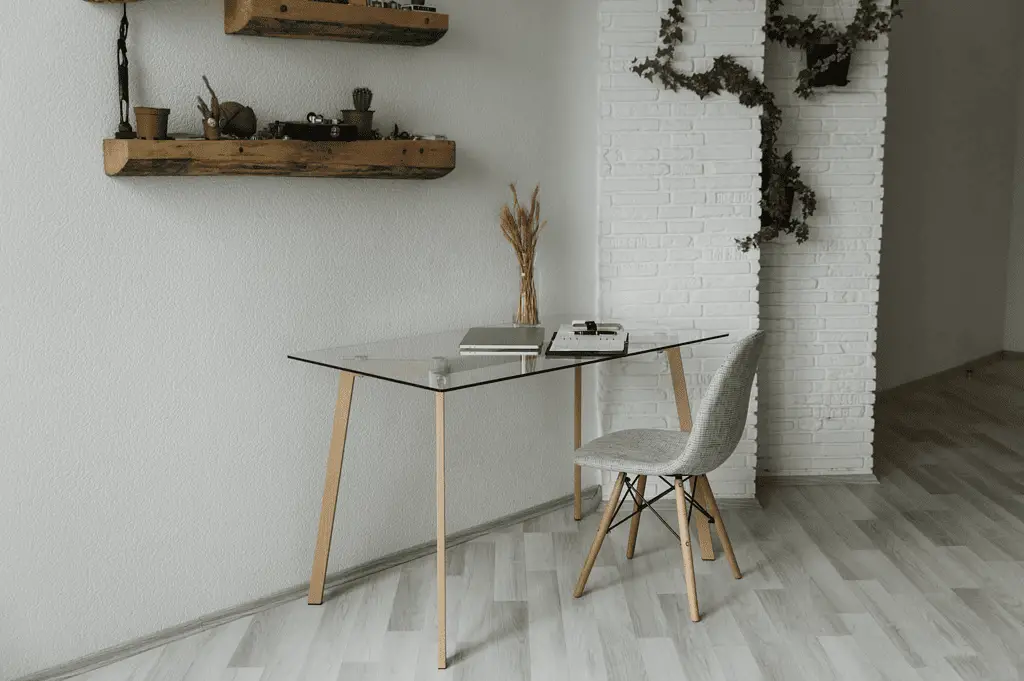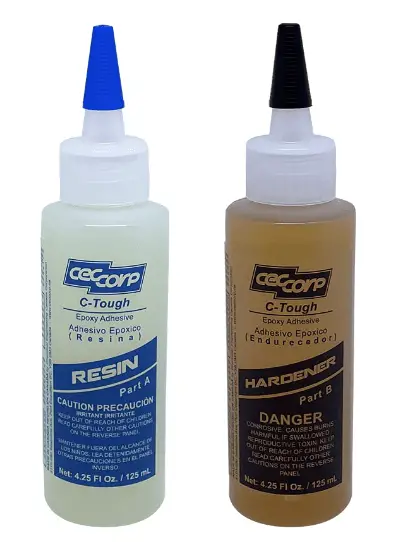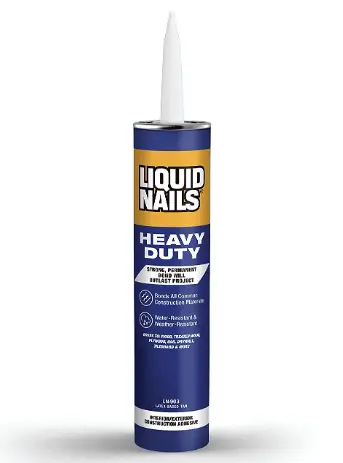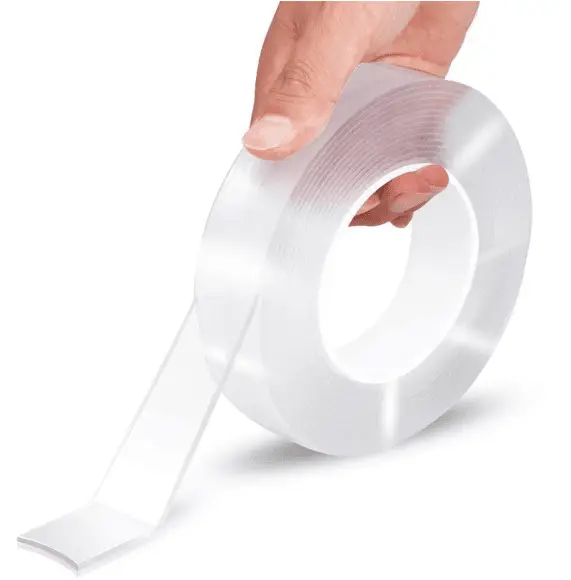Glass and wood when united can add a touch of magnificence and finesse to any area.
The charming combination can elevate any space and bring in an air of elegance as well as sophistication.
Do you want to glue glass to wood?

Gluing glass into wood is a delicate art that requires the proper technique and materials to achieve a long-lasting connection.
Without proper guidance, this seemingly straightforward task can quickly become a frustrating challenge.
Are you eager to unlock your creative capabilities by combining these two materials?
By arming yourself with the knowledge and techniques shared in this guide, you’ll be equipped to embark on your own adventure of glass-wood fusion with confidence; from crafting unique furniture pieces and accentuating interior design to repairing cherished items.
Can You Glue Glass & Wood Together?
It is entirely possible to join glass and wood with an adhesive, but it may be a tricky endeavor considering the differences between their properties & surface textures. Have this in mind if attempting a glass-wood bond.
The key to successfully bonding glass and wood is selecting the appropriate adhesive compatible with both materials.
Epoxy resins, silicone adhesive, as well as cyanoacrylate (super glue), are commonly used for this purpose. These adhesives offer good adhesion and durability when bonding different materials.
Glue Options For Glass To Wood Bonding
Bonding glass to wood requires an adhesive that can provide a solid and durable bond.
Glue is the most suitable product to achieve this goal as it is proven to be able to withstand elements and regular use.
Still, not every glue will be equally suitable for this purpose, so it is wise to explore different glues before making a purchase decision. Here are some popular choices to consider:
1. Epoxy Adhesive

Epoxy adhesive is the go-to option for bonding glass & wood as it possesses impressive strength and can be applied to a wide range of surfaces.
To make the adhesive work, a mixture of two components must be mixed together. Once mixed, epoxy produces a remarkably strong and resilient bond that withstands various conditions, including substantial forces and drastic temperature changes.
This makes it the ideal material for ensuring a strong and permanent bond between objects and materials.
2. PVA Glue

PVA (Polyvinyl Acetate) glue, also referred to as white glue, carpenter glue, or wood glue, is an all-purpose adhesive.
It efficiently adheres to porous surfaces such as wood and dries with a clear finish. However, it doesn’t work well on smoother materials such as glass.
To adhere wood to glass in woodworking, you will need to obtain a high-quality PVA glue. Anything less won’t provide the needed strength and durability.
PVA glue is not suitable for outdoor use due to its vulnerability to moisture and humidity. Items glued with it should remain indoors only.
3. Cyanoacrylate Glue

Cyanoacrylate glue, sometimes called super glue or CA glue, is renowned for its speedy joining capabilities. It creates a robust connection between materials like glass and wood.
Despite its strength, it should be noted that cyanoacrylate can be quite fragile and its bonds may easily break if subjected to excessive force or stress.
4. Special Liquid Nails

Liquid nails offer a range of specialized adhesives including those designed for glass and wood bonding.
Due to the fact that the glue is visible after it has been applied, it is recommended to use them when attaching non-transparent glass pieces to wooden surfaces.
5. Double-Sided Tape

Double-sided adhesive tapes are an incredibly useful option for many simple bonding applications between glass and wood.
However, these tapes may not offer the same long-term bond strength as other more specialized options such as epoxies.
Which Glue Is Best To Stick Glass To Wood?
Epoxy adhesives are the superior option for gluing wood to glass. They are recognized for their sturdy binding capabilities and superb durability.
Epoxy resin is a popular choice because of these qualities:
- Exceptional Strength: Epoxy’s superior tensile strength makes it an unbeatable choice for bonding glass and wood. The remarkable mechanical endurance of this adhesive makes it perfect for durable and long-lasting applications.
- Curing: It provides reliable curing under a wide range of temperatures; meaning no matter how hot or cold your working environment is, it will still cure as expected.
- Superior Adhesion: Epoxy adhesive demonstrates excellent adhesion properties to various substrates – including glass and wood. It creates a dependable bond and ensures that the components are kept securely attached.
- Chemical Resistance: The resin offers resistance to diverse chemicals so it is great for applications where exposure to different substances is a concern. Its resistance maintains the integrity of the bond between glass and wood even in challenging environments.
Steps To Glue Glass To Wood (Achieve a Flawless Bond)

A successful bond between glass and wood takes a lot of planning, preparation, and skillful execution.
Thankfully, there are several steps you can take to make sure that your glass-wood joint is reliable and long-lasting.
1. Prepare The Wood & Glass Surface
Before starting your project, ensure the wood is clean & dry. Carefully inspect for any dirt that may affect the end product. Keep an eye out for cracks or some other imperfections. If you come across any cracks, try to cover them up before continuing so as to provide a strong foundation for the bond.
Clean the glass also before you begin to ensure optimal adhesion and a snug fit. Traces of old glue and other contaminants on the glass surface can hinder the bonding process and compromise the strength of the adhesive.
2. Prepare The Glue
Selecting the right adhesive is paramount when attaching glass to wood. You want an adhesive that not only provides exceptional strength but also remains as inconspicuous as possible.
Consider selecting an adhesive that dries clear or matches the color of the wood to minimize its visibility and create a seamless as well as professional finish.
Different adhesives have varying requirements and preparation methods. To ensure the best results, read and abide by the instructions given by the adhesive manufacturer.
The preparation process may involve mixing two components, activating the adhesive, or using it directly from the tube.
Use scrap pieces of glass and wood to familiarize yourself with the adhesive’s consistency, working time, and drying properties. This way you can easily gauge the amount of adhesive needed and the technique required for even distribution.
3. Apply The Adhesive
The application of glue is a key process in forming a solid and secure bond. The technique used to adhere the glue to the surface will depend on the specific type of glue and composition.
Let’s explore the application process for different types of glue commonly used for glass-to-wood bonding:
- Liquid Nails Glue Or PVA Adhesive
To use PVA or liquid nail glue, you need to apply it on one of the surfaces you want to join together. Following a zigzag approach will help ensure that the coverage is balanced and even.
Ensure that the layer of glue is uniform and covers the entire bonding area. Avoid applying excessive glue that may squeeze out when the glass and wood are pressed together.
- Cyanoacrylate Glue
Cyanoacrylate glue, commonly known as super glue, can be an excellent adhesive choice. Super glues are great at creating strong adhesion between dissimilar surfaces.
They have exceptional bonding properties, and only a small amount is usually required for effective bonding.
Unlike wood glues, which may require a larger quantity, super glues work differently. Apply just a little CA glue per inch of the bonding area.
Cyanoacrylate glues have a quick curing time, and in most cases, the bond starts to set within seconds.
- Two-Part Epoxy
Start by selecting a clean and dry disposable container or a container specifically designed for epoxy mixing. Carefully measure and add the resin component into the container. After pouring the resin, add the hardener to the mixing container. Ensure the correct ratio of resin to hardener is added for a proper chemical reaction.
For the best results, mix the epoxy components together for a few minutes. Stirring lightly keeps air out of the adhesive and ensures a good-quality product. Upon combining the epoxy components, it is now ready to be utilized as per its intended purpose.
For the other two-component adhesives, you need to put the adhesive on one of the surfaces and then follow it up by applying the activator on the other surface. This component is responsible for triggering the chemical reaction between the two adhesive components.
- Double-Sided Tape
Using double-sided tape can be an effective method for attaching glass to wood. One notable option in the market is the 3M very high bond tape.
Applying it is pretty easy; just glue a few strips onto the back of your glass and press it firmly against the wooden surface.
4. Let it Dry a Little
Before attaching the glass, it is essential to allow the adhesive to dry slightly. This step will prevent the glue from sliding or smudging when the glass is pressed onto the wood surface.
5. Press The Glass & Wood Together
Now, it’s time to join the glass and wood. Make sure to place the glass with precision, so that its alignment with the wooden surface is exactly as per your desire.
Gently press the glass and wood together at their edges, ensuring they are flush and in perfect alignment. Firm pressure is necessary to establish a strong initial bond.
Secure the glass and wood pieces in place for a minimum of 15 minutes to give the adhesive enough time to begin bonding and establish a strong connection.
6. Allow The Glue To Cure
Patience is vital to achieving a successful glass-wood bond. Avoid disturbing or putting stress on the bond before it fully cures as this may compromise the integrity of the connection.
7. Clean The Bonded Area
Carefully inspect the bonded area for any excess glue or residue. To ensure a professional and polished finish, use a clean cloth, sponge, or specially formulated cleaning agent to gently but effectively remove any remnants of adhesive.
Take caution not to cause any scratches and ensure that all cleaning is done with extreme care and attention to detail. Even small imperfections can ruin the beauty of a piece and significantly reduce its value.
Practical Applications
Glass can be a stunning addition to various wooden surfaces, adding a touch of elegance to furniture pieces such as table tops, doors, and cabinets.
Let’s explore practical applications for attaching glass to these two common wooden elements:
How To Attach Glass To a Wood Table Top
For a contemporary look, attaching glass to a wooden table is a great option. It is of utmost importance to understand the proper procedure and steps for achieving the desired result.
Begin by laying the glass sheet over the wooden base. Take your time when lining it up and be certain it is centered and properly aligned with the wood.
Make adjustments where necessary to ensure that everything looks perfect. Once you are satisfied with the positioning, take a washable marker and carefully mark the points where the glass and wood will meet. These marks will serve as your guide during the gluing process.
Before applying any glue, clean both the glass and wood surfaces thoroughly. Glass surfaces should be wiped down with a mild glass cleaner and the wood surface should be lightly dusted off with a damp cloth to remove any dirt or dust. Ensure both surfaces are completely dry before continuing.
Choose an appropriate adhesive for gluing glass to wood. Pour the adhesive onto designated areas & use a spatula for even distribution. Make sure that all surfaces are properly covered with a thin layer of adhesive before proceeding.
With the glue applied to the wood, carefully place the glass slab onto the glued contact points. Gently press down on the glass to ensure proper adhesion and eliminate any air bubbles.
Take extra care not to shift the glass while doing this.
How To Attach Glass To a Wood Cabinet
Incorporating glass into a wooden cabinet creates a visually appealing display space for showcasing items.
Start by carefully placing the glass panel into the designated frame opening of the wood cabinet. Ensure that the glass is evenly spaced within the frame and aligned properly with the edges.
Applying silicone adhesive along the perimeter of the wood frame when bonding with glass will create a strong bond. Just use a small amount and spread it evenly across where they will meet.
Also, apply the glue along the top edge of the glass panel and a little bit on the corner of the wood frame to reinforce the connection and seal the gap.
Carefully wipe off excess silicone to create a clean finish. Avoid disturbing or moving the glass during the drying period.
Conclusion
In this piece, we delved into an assortment of strategies and adhesive options to guarantee a powerful and reliable bond between the two materials.
Selecting the correct type of adhesive and preparing the surfaces properly before following the instructions provided guarantees a strong and enduring connection. This is true whether you’re attaching glass to a tabletop, a door, or a cabinet.
For each project you undertake, prioritize safety, take your time, and pay extra attention to all the details.
Doing so will ensure that the final result is an exquisite piece that will beautifully enhance any living space while showcasing your craftsmanship.
